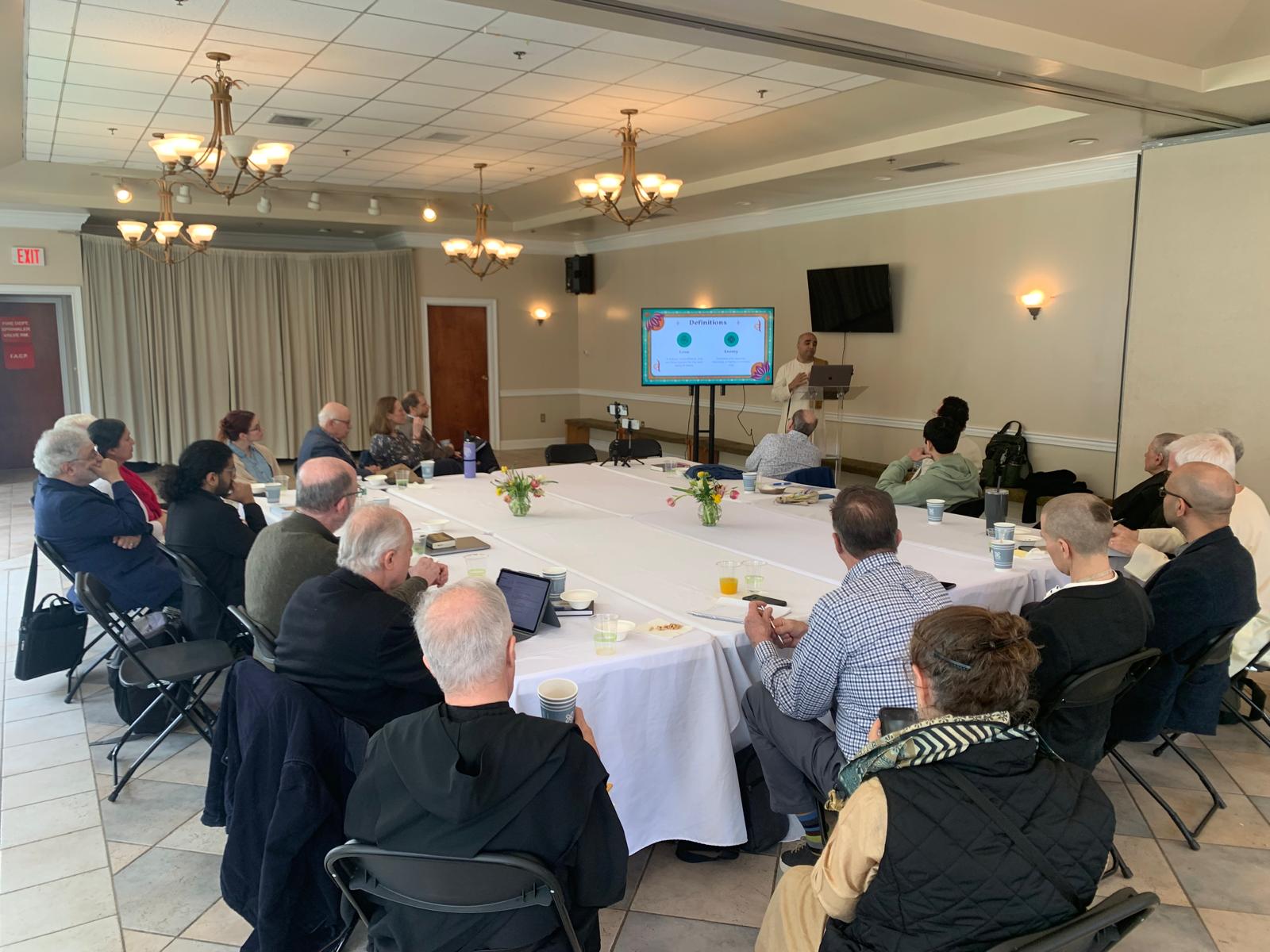Meet the Chief Enlightenment Officer
By Pronoti Datta | Oct 30, 2010

It’s structured like an MNC, complete with CEO, governing council, HR department and website. Welcome to the new-age spiritual organization.
A few years ago, a journalist met someone whose business card read ‘Country Head, New Zealand, AOL’ . Assuming that the individual worked for the Internet services and media company, the journalist began talking about AOL’s founder. Looking puzzled, the man interrupted him to clarify, “I’m with Art of Living.”
If you’re not part of a spiritual organization, it might surprise you to learn that the larger ones function somewhat like corporations, complete with branches, departments and designated office-bearers. The differences being that the head honcho is likely to be a guru and incentives for growth are in the form of good karma and spiritual progress.
Take the International Society for Krishna Consciousness (ISKCON). Formed in 1966 in New York by Swami Prabhupada, ISKCON has about 450 temples and centres across the world. Parijata Devi, who works in ISKCON’s communications office headquartered in Washington DC, broke the organization’s structure down for us. At the top of the pyramid is a governing body, followed by zonal representatives who oversee activities in different parts of the world. Each temple has presidents and vice-presidents who report to the zonal secretary. The governing commission administers various ministries. The ministry for deity worship, for instance, makes sure that pujas are carried out in a prescribed manner.
All office-bearers have to have been “initiated” into the faith. That means no meat, no gambling, no illicit sex, no intoxicants and chanting 16 rounds of the Hare Krishna mantra while counting a mala of 108 beads.
Headquartered in Abu, the Brahma Kumaris run a large organization that imparts spiritual teaching, yoga and courses on topics such as ‘mind management’, ‘positive thinking’ and ‘increasing memory power’. Leading it are three elders called administrators. The group has a number of “service wings”, each of which caters to various professions. So the Politician Wing tries to “spiritually empower politicians”, the group’s website says. There are similar wings for scientists and engineers, jurists and even the press, which is inspired to “take up the challenge of promoting positivity in an industry which perpetuates negativity” .
Some of the more unusual departments of Shrimad Rajchandra Ashram (RSA), an organization of the followers of Jain guru Rakeshbhai Jhaveri, include quality control and human resources. Maulik Shah, who runs an industrial diamond tools business, heads the HR department. His job involves conducting appraisals of departments and sevaks and assigning appropriately qualified volunteers to various departments. All of this is done online. “We capture the essential data of sevaks — work experience, industry, qualifications — on a spreadsheet,” explains Bhavin Rupani, who handles public relations . “If, for example, the legal department needs lawyers, it makes an application online to HR.” RSA has 62 centers in India and abroad, around 1,000 volunteers and thousands of followers largely in the Jain community.
At Art of Living, on the other hand, volunteers are often given duties for which they are unqualified. “This brings out skills in a person that they might not have discovered before and it leads to tremendous personal growth,” says Ami Patel, director of AOL’s communication cell. “For example, the person who was in charge of housing in the ashram today looks after the goshala (cow shed).” A fashion director at L’Officiel, Patel has been associated with AOL since 1999 when she took a basic course.
She now teaches a meditation course and a program called Youth Empowerment Seminar. “I always had a desire to do something for this planet and the people of this planet,” she says. “Somehow planting a few trees and being a part of the WWF did not quite do it for me.” Founded in 1981, AOL is operated by a large team of volunteers in 151 countries. It has a board of trustees who serve two-year terms. They are nominated by previous trustees.
When it comes to running multinational organizations, having a corporate mechanism is certainly efficient. But some groups go beyond just organizational architecture to adopt the very vocabulary of business management. ISKCON has the intriguingly named strategic planning department. “It involves training future leaders,” says Parijata Devi. “Training in spiritual practices, Vedic scriptures, leadership, how to keep devotees encouraged.” One of the functions of RSA’s HR department is running teambuilding and leadership workshops. While Shah has no background in HR, he draws on his MBA to run his department in a corporate manner.
This high level of organization and techsavvyness seems to impress young folk. Few gurus are without websites, and a number of groups post webcasts of ceremonies, have Facebook pages and SMS alerts about new developments. A large number of followers of RSA are between 30 and 60, says Rupani. This is also because their guru Rakeshbhai, who began his spiritual career at the age of eight, is relatively young at 44 years. Because most operations are carried out online, older volunteers who aren’t very computer-literate feel redundant. To help them do “seva”, the HR department runs computer classes for senior citizens.
Are followers afraid of losing the intimacy of spiritual training to corporate edifices? Is this another aspect of karma capitalism, the term used to describe the application of Hindu philosophy to business management? Patel sagely quotes her guru Ravi Shankar, “Every picture needs a frame, but the frame cannot be so big that it takes away from the picture.”












